This Peanut Tahini Mousse Recipe Is a Game-Changer
I’ve spent a long time in kitchens, and I’ve seen countless food trends come and go. But every once in a while, you stumble upon a flavor combination that just works. It’s not trendy; it’s timeless. Peanut and tahini is one of those magic pairs.
In this article
My first taste of it wasn’t even in a dessert. It was a savory dressing a chef whipped up, and the deep, earthy sesame flavor perfectly cut through the comforting roastiness of the peanut. It was a lightbulb moment. I knew right away that this combo needed to be the star of a dessert.
So, this isn’t just another recipe I’m throwing at you. My goal is to walk you through the craft of making a truly exceptional mousse, the kind you’d get in a high-end restaurant. We’ll go beyond the steps and look at why we do what we do. You’ll learn the little tricks for getting that light, airy texture every single time and, just as importantly, how to fix things when they go wrong. Because let’s be honest, in a real kitchen, things go wrong sometimes. This is about understanding the process so you can nail it.
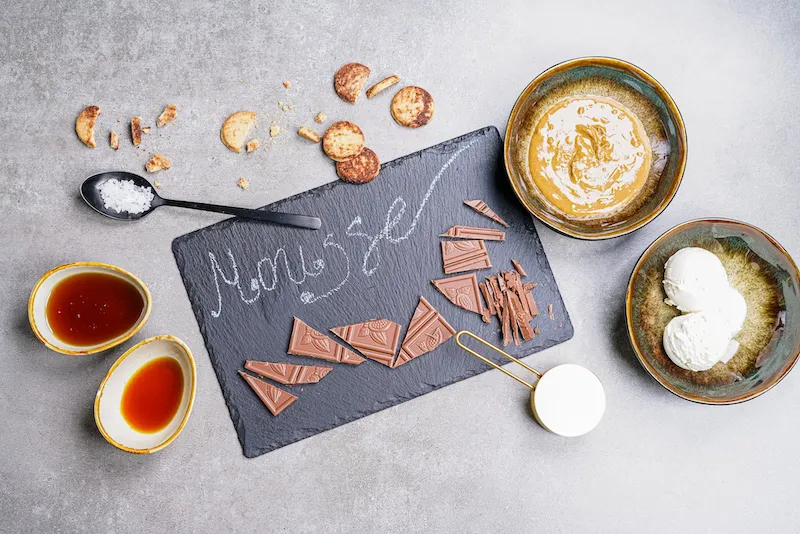
First Things First: The Shopping List
Before we dive in, let’s get organized. Here’s everything you’ll need to make this mousse. I’ve found this recipe is perfect for about 6 individual servings.
- For the Mousse:
- Full-Fat Block Cream Cheese: 226g (8 oz)
- Smooth Natural Peanut Butter: 130g (1/2 cup)
- Hulled Tahini: 120g (1/2 cup)
- Maple Syrup: 120ml (1/2 cup)
- Heavy Whipping Cream (at least 35% fat): 360ml (1 1/2 cups)
- Vanilla Extract: 1 tsp
- Pinch of fine sea salt
- For the Chocolate Drizzle & Garnish:
- Good Quality Dark Chocolate (60-72% cacao): 100g (about 3.5 oz)
- Coconut Cream or Heavy Cream: 120ml (1/2 cup)
- Crushed Biscuits (like Biscoff or chocolate wafers)
- Toasted Sesame Seeds
- Flaky Sea Salt (like Maldon)
Quick heads-up on timing: Plan for about 25 minutes of active prep time. The real key, though, is the chilling. You need to let it set for a minimum of 6 hours, but overnight is even better.
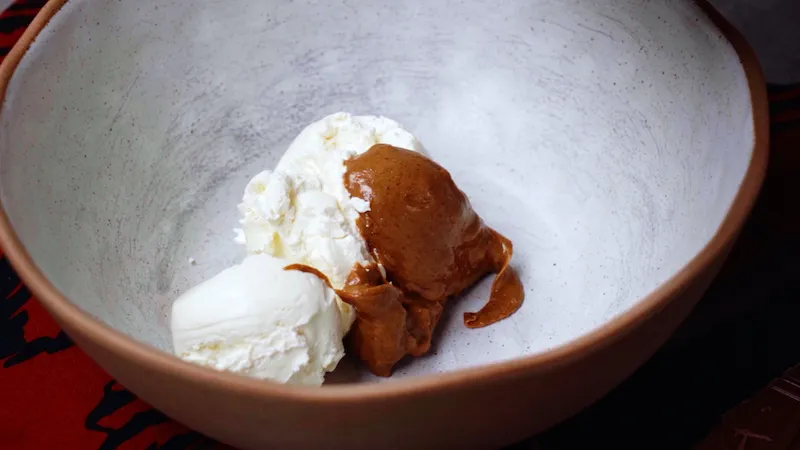
Let’s Talk Ingredients (Because Quality Matters)
With a simple recipe like this, you can’t hide behind a dozen ingredients. Every single one has a job to do, and choosing the right stuff is the difference between a pretty good dessert and a fantastic one.
The Tahini: The Soul of the Mousse
Don’t just think of tahini as a background flavor—it’s the heart of this dish. It brings a savory, nutty depth that keeps the mousse from being cloyingly sweet. But, and this is a big but, not all tahini is created equal.
You absolutely must use hulled tahini for this. It’s made from sesame seeds with the outer shell removed, which gives you a super smooth, creamy, and mild paste. Unhulled tahini is more bitter and coarse, and it will completely overpower your dessert. Trust me on this.
Good to know: The best tahini often comes from the Levant region. It’s incredibly fluid and has a clean, toasted flavor. I find brands like Soom or Seed + Mill are fantastic and reliable. You can find them at Middle Eastern grocery stores, specialty shops, or online, usually for around $10-$15 a jar. When you open a jar of natural tahini, you’ll see oil on top. Don’t pour it off! That’s part of the magic. Just stir it back in until it’s completely smooth. If it tastes bitter right out of the jar, it’s probably old—don’t use it. I learned that lesson the hard way once and had to remake a massive batch of sauce five minutes before service.
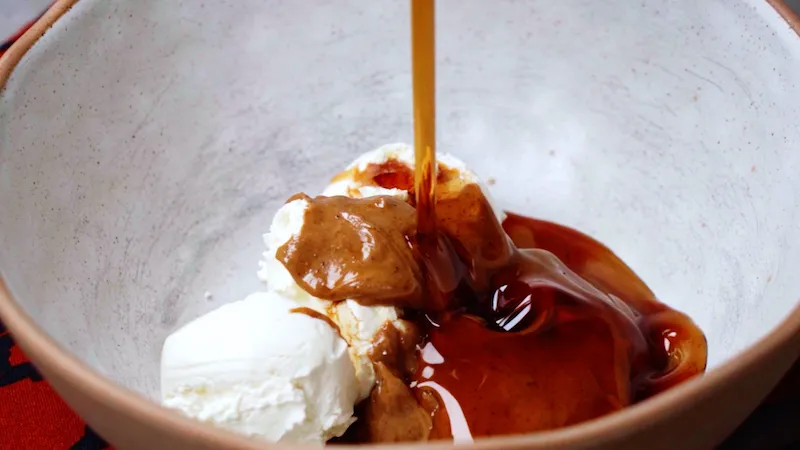
The Peanut Butter: The Comforting Base
For this mousse, stick with a natural smooth peanut butter. The ingredient list should be ridiculously simple: just peanuts and maybe salt. Skip the big commercial brands that add sugar, palm oil, or other stabilizers. Those extras can make the mousse feel waxy or dense. A good natural peanut butter will have that same layer of oil on top as the tahini; just stir it back in. And yes, it has to be smooth. We want a silky, airy texture, and crunchy bits will ruin the vibe. You can add crunch with the garnish later.
To save money: Many store-brand natural peanut butters are perfectly fine! Just double-check the label to make sure you’re not getting any unwanted additives.
The Cream: The Vehicle for Air
The cream is what turns our flavor base into a light-as-a-cloud mousse. For this to work, you need a heavy whipping cream with at least a 35% fat content. This is non-negotiable. The fat globules are what create a stable network to trap air when you whip it. Lower-fat creams will just leave you with a soupy mess.

Thinking of making a vegan version? It’s totally possible! Look for a good vegan whipping cream; I’ve had success with plant-based options from Silk or Country Crock. Another route is full-fat canned coconut cream. Just chill the can overnight, scoop out the thick, solid cream on top (discard the watery stuff), and whip that. Be aware, though, it will add a distinct coconut flavor. Honestly, dairy cream is a bit more forgiving and stable, but the vegan creams work great—you just have to know what to expect.
The Stabilizer: Cream Cheese
Cream cheese does two things here: it adds a subtle tang that cuts through all that richness, and it provides extra structure to help the mousse hold its shape. Always use the full-fat, block-style cream cheese. The whipped or low-fat stuff has too much water and air and will mess up the texture. For a vegan option, a firm, cashew-based cream cheese is usually your best bet.
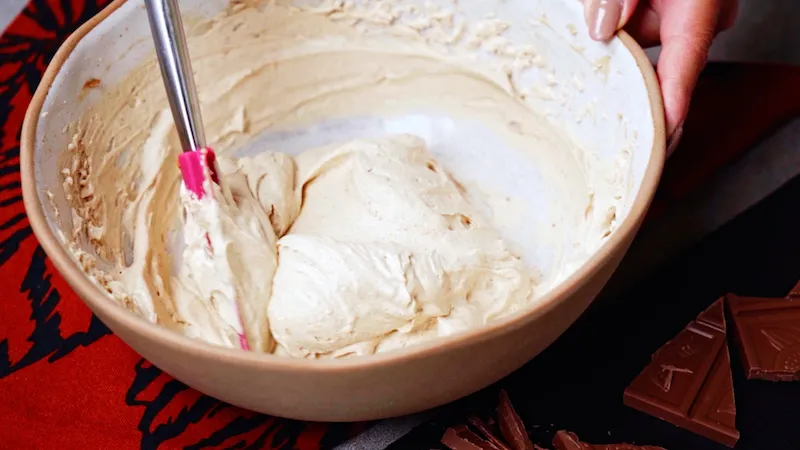
The
Inspiration:
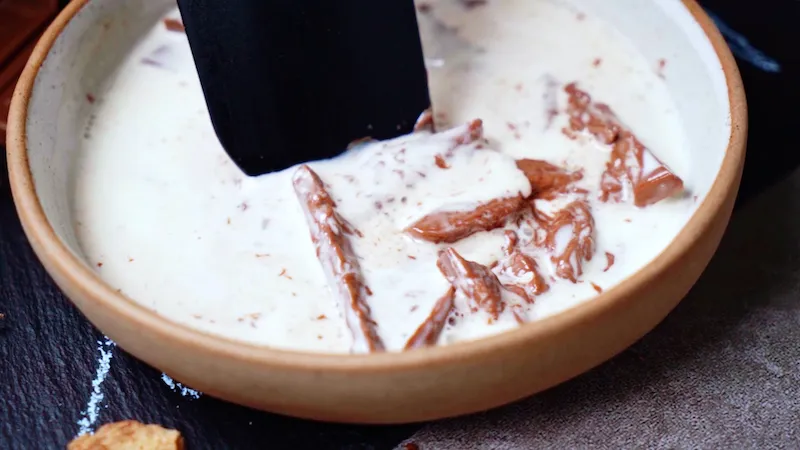
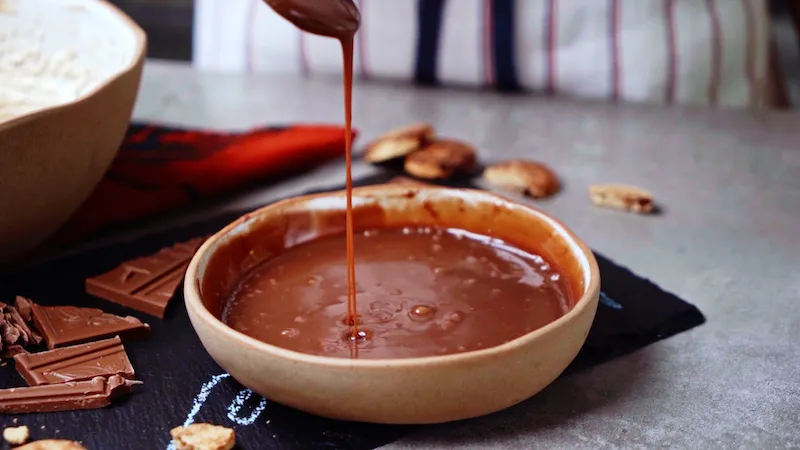
What’s the real difference between tahini types?
It all comes down to the hull. For this mousse, you absolutely want hulled tahini. It’s made from sesame seeds that have had their outer shell removed, resulting in a smoother, creamier paste with a milder, less bitter flavor that won’t overpower the peanut. Brands like Soom or Al-Wadi are excellent choices. Unhulled tahini, while richer in calcium, is more bitter and has a grittier texture, making it better suited for savory dishes like baba ghanoush rather than a delicate dessert.
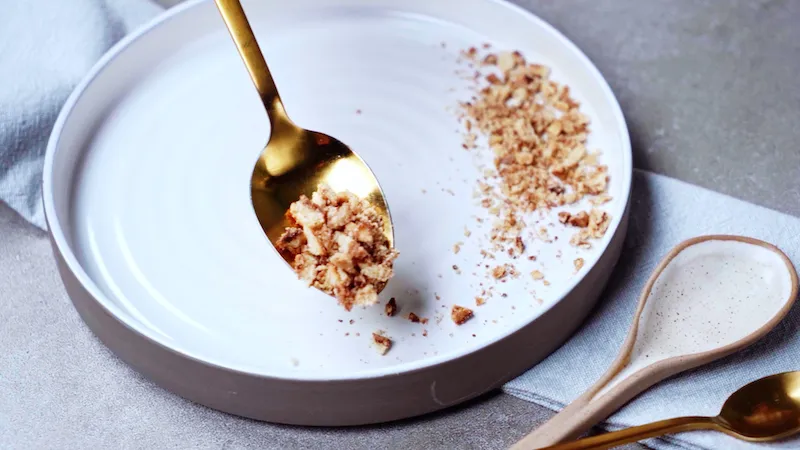
Nearly 70% of sesame seeds grown worldwide are used for oil and tahini production, a testament to its global culinary importance.
While long a staple in Middle Eastern and Mediterranean cooking, its recent explosion in Western desserts showcases a major shift. Pastry chefs are embracing its savory, nutty depth to balance sweetness, moving beyond predictable flavors. This mousse is a perfect example of that modern trend.
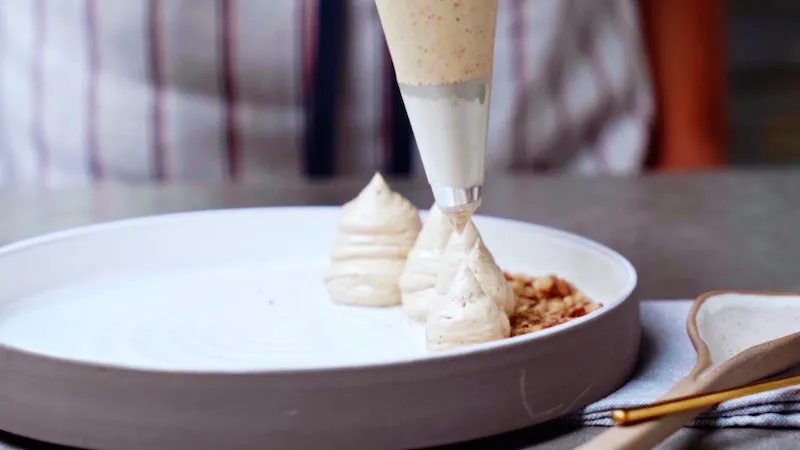
For the perfect chocolate drizzle: The key is fluidity without being watery. Use a high-quality dark chocolate like Valrhona Guanaja 70% or Callebaut 70-30-38. When melting it with the cream, stir gently until just combined. Don’t overmix, or it can become grainy. For that professional look, use a small spoon and let the ganache drip from the tip in a swift, confident motion. An irregular, organic drizzle looks far more appealing than a perfectly symmetrical one.
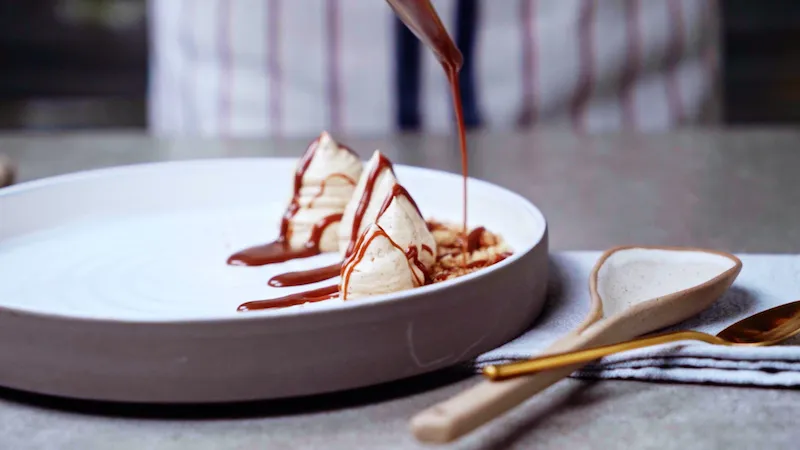
- A pinch of ground cardamom introduces a warm, aromatic spice.
- A teaspoon of instant espresso powder dissolved in the vanilla extract will deepen the nutty notes.
- A dash of high-quality bourbon can add a smoky, oaky complexity.
The secret? Customizing the flavor profile. These simple additions, mixed in with the cream cheese and peanut butter, can elevate the mousse and make the recipe uniquely yours.

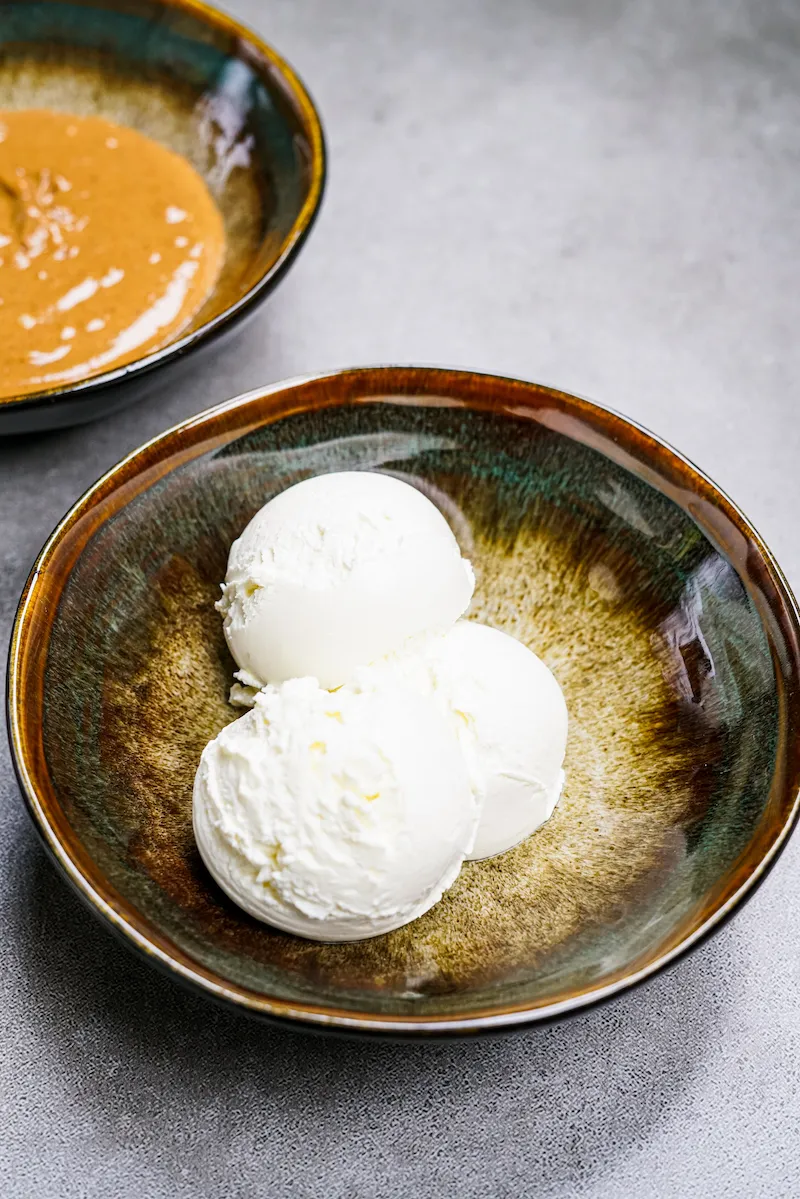
Maldon Salt is not just for finishing: While the recipe calls for flaky salt as a garnish, don’t underestimate the power of a tiny pinch of fine sea salt in the mousse base itself. Salt doesn’t just make things salty; it’s a flavor enhancer. In a sweet recipe, it suppresses bitterness (from both the tahini and chocolate) and makes the sweetness of the maple syrup and the roastiness of the peanuts feel more vibrant and complex.
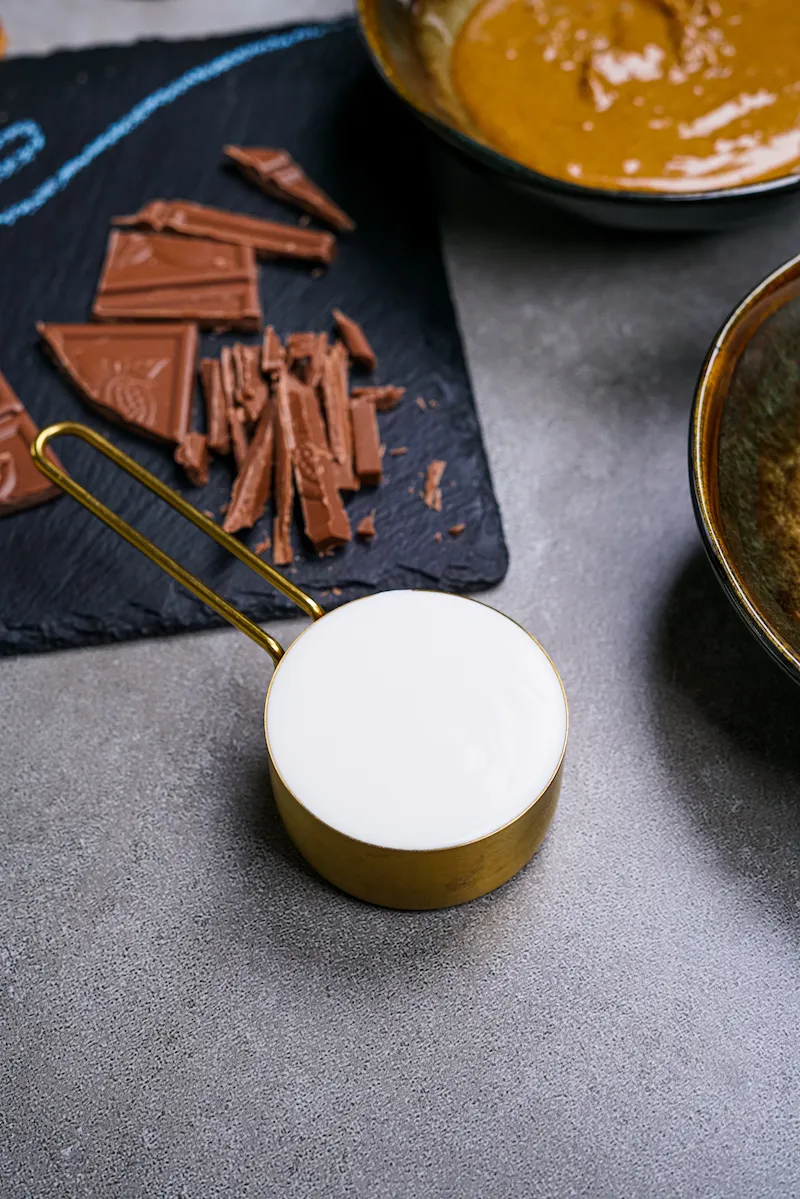
To truly create a restaurant-worthy experience, think about the vessel. Serving this mousse in a wide, shallow coupe glass or a small, rustic ceramic bowl changes the perception entirely. A coupe allows for more surface area for garnish, while a deep bowl makes each spoonful a discovery. Presentation is the final ingredient.
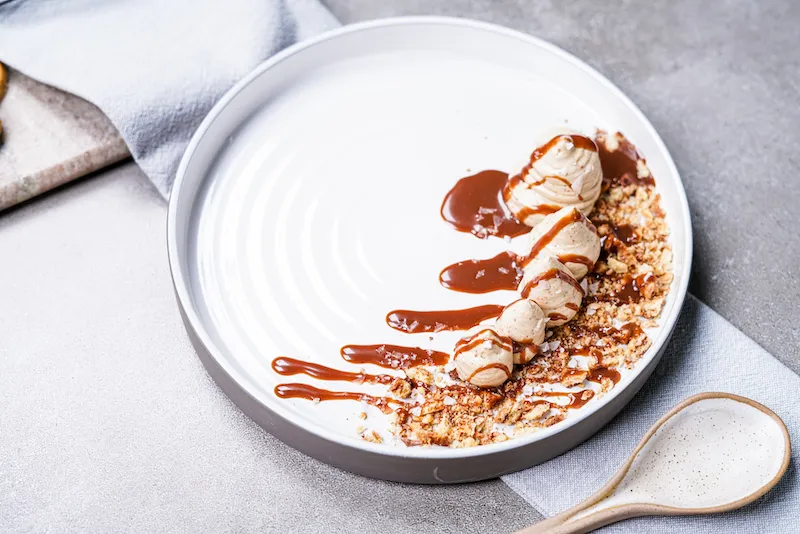
Peanut Butter: Natural, unsweetened peanut butter is non-negotiable here. Brands like Smucker’s Natural or Teddie, which contain only peanuts and salt, have a runnier consistency that incorporates smoothly. Avoid conventional peanut butters with added sugars and hydrogenated oils (stabilizers), as they will make the mousse too sweet and its texture waxy.
Cream Cheese: Full-fat, block-style cream cheese (like Philadelphia original) provides the necessary structure. Whipped or low-fat versions contain more air and water, which can prevent the mousse from setting firmly.
Pairing this dessert is half the fun. The earthy, nutty, and rich profile of the mousse opens up wonderful possibilities.
- Coffee: A dark, freshly brewed espresso or a robust pour-over coffee cuts through the richness beautifully.
- Wine: A sweet, nutty sherry like a Pedro Ximénez is a classic pairing for this kind of dessert.
- Tea: For a less conventional choice, try a Japanese Hojicha. Its roasted, toasty notes will echo the peanut flavors perfectly.










